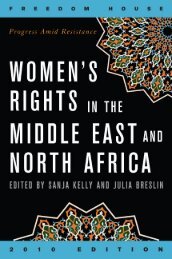Women and Politics in the Third World
Women and Politics in the Third World
Women and Politics in the Third World
You also want an ePaper? Increase the reach of your titles
YUMPU automatically turns print PDFs into web optimized ePapers that Google loves.
WOMEN AND THE STATE IN THE THIRD WORLD 35<br />
course, <strong>the</strong> spaces provided (or not) by <strong>the</strong> civil society to organise is an<br />
important variable.<br />
What we beg<strong>in</strong> to piece toge<strong>the</strong>r from our study of <strong>the</strong> women <strong>and</strong> <strong>the</strong> state is<br />
that it is a highly complex picture, <strong>and</strong> one that is radically different from <strong>the</strong><br />
reality faced by Western women. In <strong>the</strong> next section I want to explore some of<br />
<strong>the</strong>se differences <strong>and</strong> <strong>the</strong>mes.<br />
IN AND AGAINST THE STATE?<br />
It seems to me that <strong>the</strong>re are two different st<strong>and</strong>po<strong>in</strong>ts that we have to keep <strong>in</strong><br />
m<strong>in</strong>d when we discuss <strong>the</strong> question of <strong>the</strong> state vis-à-vis women. The first is that<br />
of <strong>the</strong> daily lived realities of women’s lives. Here we have to consider both <strong>the</strong><br />
nature of <strong>the</strong> state formation under which particular groups of women live, as<br />
well as different social <strong>and</strong> political variables that affect <strong>the</strong>ir deal<strong>in</strong>gs with <strong>the</strong><br />
state. The second is <strong>the</strong> st<strong>and</strong>po<strong>in</strong>t of <strong>the</strong> fem<strong>in</strong>ist response to <strong>the</strong> state. Whe<strong>the</strong>r<br />
as strategy or as critique <strong>the</strong> options before fem<strong>in</strong>ists have to be dist<strong>in</strong>guished from<br />
those before <strong>the</strong> first group quite deliberately <strong>in</strong> order that we might be <strong>in</strong> a<br />
better position to underst<strong>and</strong> both. The relationship between <strong>the</strong>ory <strong>and</strong> practice<br />
has to be foregrounded once aga<strong>in</strong> to be able to address <strong>the</strong> question of <strong>the</strong><br />
political role that women can <strong>and</strong> need to play <strong>in</strong> <strong>the</strong> arena of public power. I shall<br />
come back to this later.<br />
One of <strong>the</strong> most startl<strong>in</strong>g differences between <strong>the</strong> women <strong>in</strong> Western liberal<br />
states <strong>and</strong> those <strong>in</strong> <strong>the</strong> <strong>Third</strong> <strong>World</strong> is <strong>the</strong> extent to which <strong>the</strong>y are directly<br />
‘touched’ by <strong>the</strong> regulatory power of <strong>the</strong> state. <strong>Women</strong> <strong>in</strong> <strong>Third</strong> <strong>World</strong> countries<br />
are more removed from <strong>the</strong> state <strong>in</strong> all its manifestations than are Western<br />
women. This is because <strong>the</strong> state <strong>in</strong> <strong>the</strong> <strong>Third</strong> <strong>World</strong> is unable to provide <strong>the</strong><br />
k<strong>in</strong>d of safety network that <strong>the</strong> Western liberal state does with its welfare<br />
provision. Both <strong>the</strong> upper-class women <strong>and</strong> those of <strong>the</strong> lower classes do not fall<br />
with<strong>in</strong> <strong>the</strong> ambit of state function<strong>in</strong>g. In health, education, child care <strong>and</strong><br />
employment <strong>the</strong> upper-class women have traditionally depended on <strong>the</strong> private<br />
sector, <strong>and</strong> so too <strong>the</strong> poorest women: <strong>the</strong> first group because of <strong>the</strong> access to<br />
private, non-state resources, <strong>the</strong> second, because <strong>the</strong> state can provide <strong>the</strong>m with<br />
very little support.<br />
Second, as most <strong>Third</strong> <strong>World</strong> states can be categorised as ‘weak’ states, women<br />
<strong>in</strong> <strong>the</strong>se states do not become aware of many areas of state legislation <strong>and</strong> action.<br />
The dissem<strong>in</strong>ation of <strong>in</strong>formation about new legislation is extremely varied <strong>and</strong><br />
patchy. Illiteracy <strong>and</strong> exclusionary social practices fur<strong>the</strong>r exacerbate this isolation<br />
from <strong>the</strong> processes of <strong>the</strong> state. The lack of political will to disturb traditional<br />
family values is one manifestation of <strong>the</strong> ‘weak’ patriarchal state. Political<br />
expediency overrules <strong>the</strong> rhetoric of social justice fairly easily when <strong>the</strong> state<br />
perceives <strong>the</strong> threat to its cont<strong>in</strong>uance. Fur<strong>the</strong>r, <strong>the</strong> lack of <strong>the</strong> <strong>in</strong>frasrtuctural power<br />
of <strong>the</strong> state means that its laws are altoge<strong>the</strong>r ignored <strong>in</strong> many parts of <strong>the</strong> country.<br />
So even though Indian women have constitutional rights of <strong>in</strong>heritance, divorce<br />
<strong>and</strong> ma<strong>in</strong>tenance for example, <strong>the</strong> enforcement of <strong>the</strong>se rights is at best patchy.




